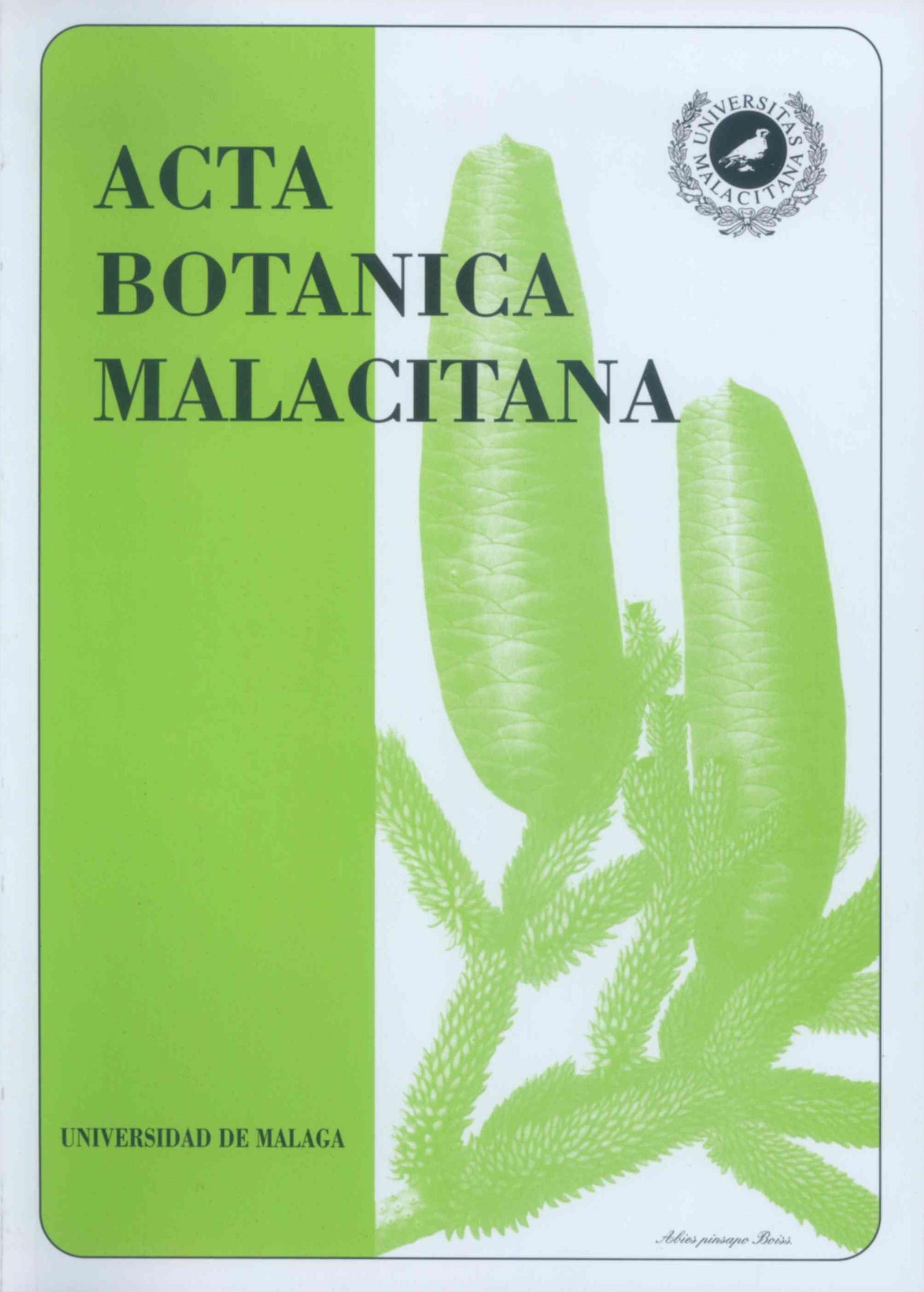Study on various species of the genera Trachelomonas and Strombomonas (Euglenophyta)
DOI:
https://doi.org/10.24310/abm.v16i.9135Keywords:
Algae, Euglenoids, Trachelomonas, StrombomonasAbstract
Seven species of Euglenophyceae with lorica (2 Strombomonas and 5 Trachelomonas) haven been studied. We analyzed their lorica microarchitecture by means of ligh microscopy and scanning electron microscopy, enumerating their different ornamental elements. We stand out the study of three population of Trachelomonas, two of them are provisionally included in T. nigra and T. similis respectively. The third one: Trachelomonas sp. show a large morphological variability with only one common ornamental character within of the population: a ring of perforations around the flagellum pore.
Downloads
Metrics
References
CONFORTI, V. & G. TELL -1989- Ultraestructure of the pellicle and the envelope of some euglenoid flagellates from Argentina by means of S.E.M. Nova Hedwigia, 48(1-2):187- 206.
ROSOWSKI, JR., R.L. VADAS & P. KRUGENS -1975- Surface configuraions as realted with Scanning Electron Mycroscopy. Ann. J. Bot., 62(1):48-57.
TELL, G. & V. CONFORTI -1984- Ultraestructura de la lo?rica de cuatro especies de Strombomonas Def. (Euglenophyta) en MEB. Nova Hedwigia, 40:123-132.
TELL, G. & V. CONFORTI -1988- Quelques Strombomonas Def.(Euglonophyta) de l'Argentine au microscope pnotonique et e?lectronique a? balayage. Nova Hedwigia, 46(3- 4):541-556.
Downloads
Published
How to Cite
Issue
Section
License
Those authors who publish in this journal accept the following terms:
a. The authors will retain their copyrights and guarantee the journal the right of first publication of their work, which will be simultaneously subject to the Creative Commons Attribution-Non-commercial 4.0 license whose full text can be found at <http: // creative commons .org / licenses / by-nc / 4.0> that allows third parties to share the work as long as its author and its first publication are indicated, and as long as it is not for commercial purposes.
b. Authors may adopt other non-exclusive licensing agreements for the distribution of the version of the published paper (e.g., deposit it in an institutional telematic file or publish it in a monographic volume) provided that the initial publication in this journal be indicated.
c. Authors are allowed and recommended to disseminate their work through the Internet (e.g., in institutional telematic archives or on their websites) before and during the submission process, which can produce interesting exchanges and increase citations of the published work. (See The effect of open access)







1.png)
